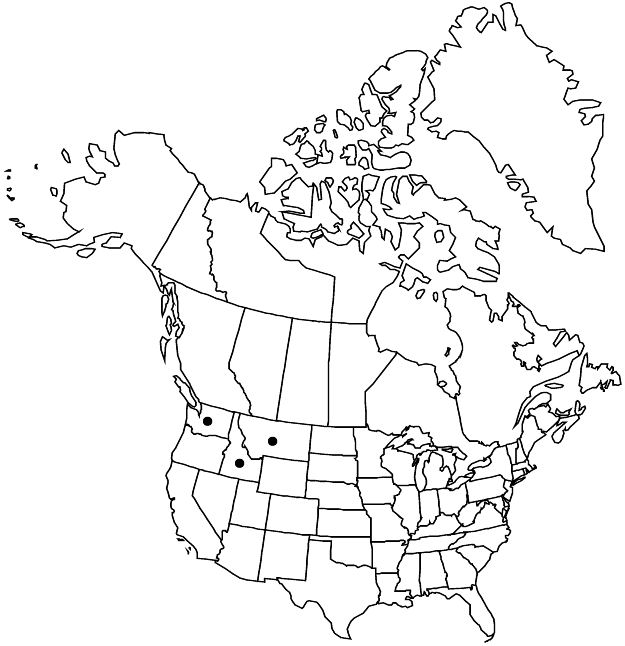Difference between revisions of "Ivesia tweedyi"
in N. L. Britton et al., N. Amer. Fl. 22: 288. 1908.
FNA>Volume Importer |
imported>Volume Importer |
||
| (3 intermediate revisions by 2 users not shown) | |||
| Line 1: | Line 1: | ||
{{Treatment/ID | {{Treatment/ID | ||
|accepted_name=Ivesia tweedyi | |accepted_name=Ivesia tweedyi | ||
| − | |accepted_authority=Rydberg | + | |accepted_authority=Rydberg |
|publications={{Treatment/Publication | |publications={{Treatment/Publication | ||
|title=in N. L. Britton et al., N. Amer. Fl. | |title=in N. L. Britton et al., N. Amer. Fl. | ||
| Line 19: | Line 19: | ||
|name=Potentilla tweedyi | |name=Potentilla tweedyi | ||
|authority=(Rydberg) J. T. Howell | |authority=(Rydberg) J. T. Howell | ||
| + | |rank=species | ||
}} | }} | ||
|hierarchy=Rosaceae;Rosaceae subfam. Rosoideae;Rosaceae tribe Potentilleae;Ivesia;Ivesia sect. Ivesia;Ivesia tweedyi | |hierarchy=Rosaceae;Rosaceae subfam. Rosoideae;Rosaceae tribe Potentilleae;Ivesia;Ivesia sect. Ivesia;Ivesia tweedyi | ||
| Line 44: | Line 45: | ||
-->{{#Taxon: | -->{{#Taxon: | ||
name=Ivesia tweedyi | name=Ivesia tweedyi | ||
| − | + | |authority=Rydberg | |
| − | |authority=Rydberg | ||
|rank=species | |rank=species | ||
|parent rank=section | |parent rank=section | ||
| Line 59: | Line 59: | ||
|publication year=1908 | |publication year=1908 | ||
|special status=Conservation concern;Endemic | |special status=Conservation concern;Endemic | ||
| − | |source xml=https:// | + | |source xml=https://bitbucket.org/aafc-mbb/fna-data-curation/src/2e0870ddd59836b60bcf96646a41e87ea5a5943a/coarse_grained_fna_xml/V9/V9_362.xml |
|subfamily=Rosaceae subfam. Rosoideae | |subfamily=Rosaceae subfam. Rosoideae | ||
|tribe=Rosaceae tribe Potentilleae | |tribe=Rosaceae tribe Potentilleae | ||
Latest revision as of 22:56, 5 November 2020
Plants green, ± rosetted to tufted; taproot stout, not fleshy. Stems ascending to erect, 0.4–2(–3.5) dm. Basal leaves loosely cylindric, (3–)4–12(–17) cm; sheathing base glabrous abaxially; petiole 0.5–7 cm, hairs 1–1.5 mm; leaflets 10–16 per side, 4–7(–10) mm, glabrous or sparsely hirsute, glandular-puberulent or -pubescent, lobes (2–)5–15, linear to narrowly oblanceolate, apex not setose. Cauline leaves (0–)1–2, not paired. Inflorescences (5–)10–25(–35)-flowered, (1–)1.5–3(–4.5) cm diam.; glomerules 1–few. Pedicels 1–3(–5) mm. Flowers 9–12 mm diam.; epicalyx bractlets linear, 1–2 mm; hypanthium shallowly campanulate, 1–1.5 × 2–4(–5.5) mm; sepals 2–3.5 mm, acute; petals golden yellow, broadly elliptic to spatulate, 2.5–3.3 mm; stamens 5, filaments 1–1.7 mm, anthers yellow, 0.5–0.8 mm; carpels (2–)4–6(–9), styles 2–3 mm. Achenes olive green, 1.8–2 mm.
Phenology: Flowering summer.
Habitat: Dry, gravelly to rocky flats, slopes, alpine ridges, often on serpentine, in subalpine conifer woodlands
Elevation: 1600–2300 m
Distribution

Idaho, Mont., Wash.
Discussion
Of conservation concern.
Ivesia tweedyi is found from the Cascade Range in Washington to Boundary and Shoshone counties in Idaho, barely entering Montana in Mineral County.
Selected References
None.